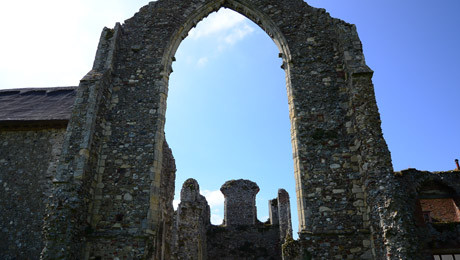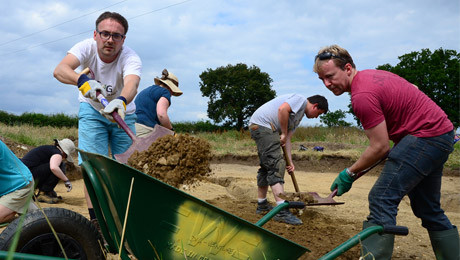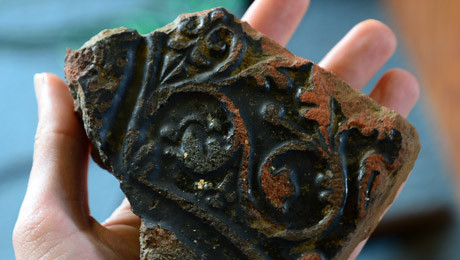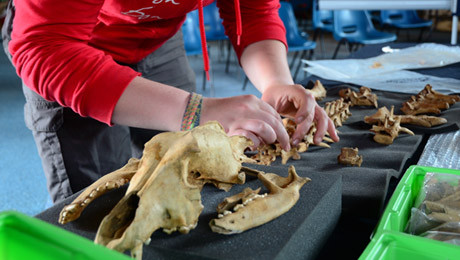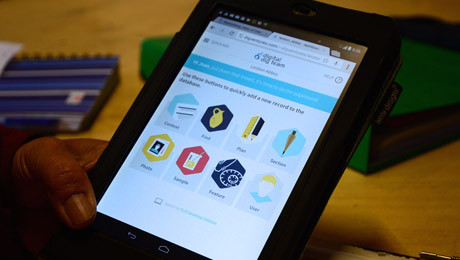The excavations at Leiston Abbey are part of a four-year project to unearth the untold story of Suffolk’s finest medieval ruins. Over the last three years, more than 500 crowdfunders have helped us carry out in-depth excavations, and start piecing together the story of what happened here 700 years ago.
You can explore the 3D Trench Location Plan to see where we’ve dug so far, and why. Clicking the links will take you through to the trench record, where you’ll be able to see the finds, features and contexts that we found inside. Or keep scrolling for a year-by-year summary of what we’ve uncovered, and what’s next on the archaeological agenda.
The ‘New’ Abbey – 3D Trench Location Plan
2013 – Testing the ground
As with any excavation, you first have to assess what kind of archaeology survives on your site, where it is located and what kind of condition it’s in. In 2013, we started by opening trenches 1, 2, 3, 4, 5, 6 and 7, and found that evidence survived from all phases of the abbey’s life.
To the northwest of the abbey, trenches 1, 2, 3 and 6 revealed a series of earthworks contemporary with the ruins, and which seem to have been for channeling water away from the abbey. They also cut into some much earlier prehistoric features, hinting at a previously unknown settlement on the site.
Trench 4 contained a ditch, probably from a moated building predating the abbey’s construction. Trench 5 revealed the remains of an agricultural building, providing evidence that following the abbey’s forced Dissolution, the abbey was reborn as a farmstead.
Finally, Trench 7 contained rubble from a demolished building, whose original function remains elusive, but also contained the grave of a large, working dog.
Read the official 2013 report here.
2014 – The Latrine, And The Fields To The West
In 2014, we opened trenches 8, 9, 10, 11, 12 and 13 to take a closer look at life at Leiston Abbey.
Trenches 8 and 9 were placed at the south end of the abbey, at the back of the reredorter (the communal latrine).
From the food they ate, to the pots they cooked in and the things they dropped down the lavatory, trenches close to the abbey walls can help locate subsurface features containing evidence of the priests’ domestic and spiritual life.
Read the official 2014 report.
2015 – The Refectory, The Infirmary And The Gatehouse
In 2015, we opened trenches 14, 15, 16, 17, 18, 19, 20, 21 and 22 to get the big picture view of Leiston Abbey.
Trench 14 was in the refectory, right in the very heart of the abbey. Trenches 15 and 16 were placed so as to investigate a building that had been spotted by aerial photography, and which seemed to correlate with the abbey infirmary.
Trenches 17-22 were placed around the periphery of the site, in order to locate the abbey’s boundary and the missing gatehouse.
We also carried out a small evaluation of Leiston Abbey’s original site at Minsmere. We didn’t open a trench, we sifted through some of the rubble that the WW2 soldiers left when they installed the
Read the official 2015 report.
2016 – Leiston’s Origins… Back To The ‘Old’ Abbey At Minsmere!
Next up on the archaeological agenda, we’re heading to RSPB Minsmere to investigate the original site. Will we find evidence of piracy? How much of the original abbey survives below ground?

